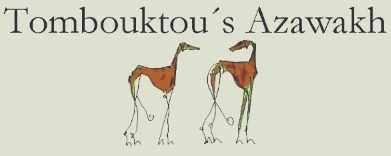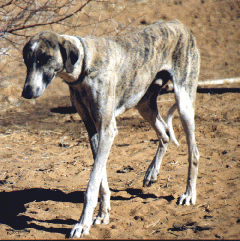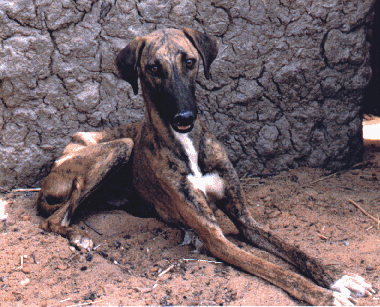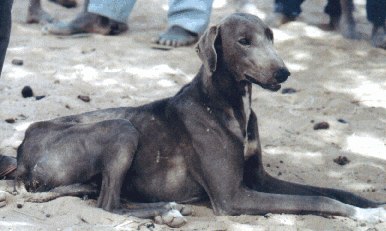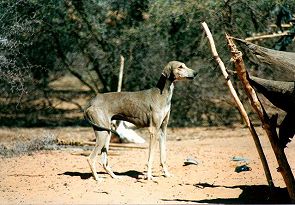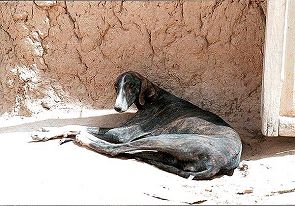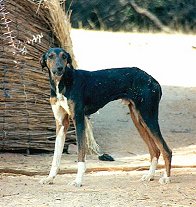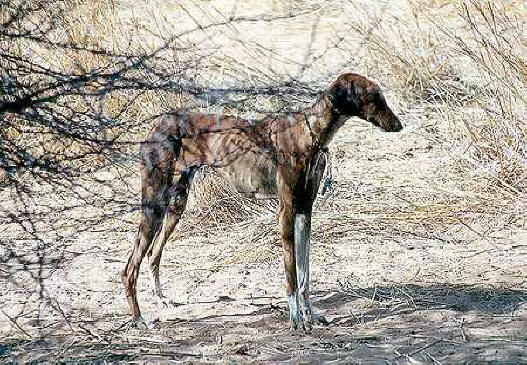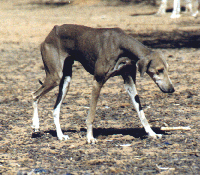
The Azawakh is an African sighthound of ancient origin raised throughout the Sahelian zone of Mali, Niger, and Burkina Faso. This region includes the Azawakh Valley for which the breed is named. Westerners associate the hounds primarily with the nomadic Tuareg but they are also bred and owned by other ethnic groups such as the Peulh and Bella. The Hausa, a settled ethnic group living by trading and agriculture, also raise the hounds.
The Azawakh is the only hound indigenous to this region. As in any aboriginal population there is a great amount of genetic and phenotypic heterogeneity. One can see highly refined hounds alongside others of more rustic type. Today the hounds are used primarily for guarding: protecting herds of livestock and nomadic camps and villages. Hunting is still practiced but has been relegated to a secondary function because of a lack of game in the region.
Selective breeding as practiced in the west for phenotype and markings is unknown. There is typically one female per camp, sometimes more in a village. Females are bred by the alpha male of the locale who is of course physically and mentally the strongest male. In modern times there are few planned matings.
The owner of the female, using various criteria, culls the litter to only two or three puppies shortly after birth. This helps prevent an insupportable increase in the population and guarantees better nutrition for the surviving puppies. Average life spans are very short for both humans and their Azawakh. Prolonged periods of severe drought contribute to nutritional deficiency diseases. Epidemics of diseases such as rabies and distemper, internal parasites, and wounds caused by accidents are the main reasons for the very short life spans of the hounds.
The seasonal migration of the nomads increases the distribution of hounds and results in greater diversity within the gene pool. Such diversity is a strong prerequisite for the genetic health and temperamental stability of the hounds.
Currently the FCI standard of the Azawakh allows only the coat colors of sand to red, with and without black brindling. White markings are required on all four extremities, the tip of the tail and the chest. A blaze in the face is allowed. Any deviation from the above standard is a major or eliminating fault.
However, this ideology does not reflect the reality regarding colors and markings of the hounds in the Sahel where the coat colors accepted by the FCI standard are indeed the dominant colors but where a smaller part of the population display different coat colors and patterns. On two ABIS expeditions I saw parti-colored, black, blue, and cream Azawakh. There were also some with a black blanket or grizzle markings. Additionally more extensive white markings than described in the standard are very common.
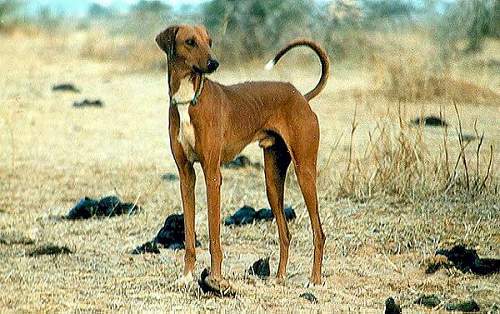
The Sahelian Azawakh population is a very precious genetic reservoir. In my opinion the FCI standard should be amended to include all the colors and patterns found in the Sahel. This would allow breeders to utilize more Sahelian-bred hounds to augment and hopefully enhance the European breeding lines. This would also help to preserve the original character and performance abilities of our Azawakh and help to balance the increasingly extreme type found so often today in the show ring.
The long term goal of preserving the breed should have more importance than a moment of success in the show ring. The Azawakh is a part of the cultural heritage of the peoples of the Sahel and should be preserved in its authentic form.
“One need look no further than the Sahel to find the ideal Azawakh.”
